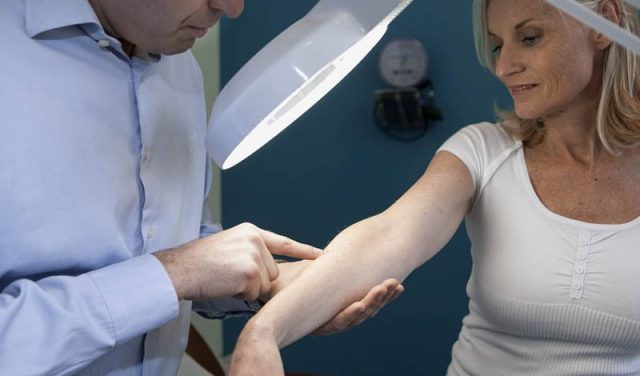Women have increased risk for thyroid, renal, lung cancers; men have highest risk for melanoma, bladder, prostate cancers
By Elana Gotkine HealthDay Reporter
WEDNESDAY, April 3, 2024 (HealthDay News) — Patients with primary cutaneous B-cell lymphomas (PCBCLs) have an increased risk for second primary malignancies (SPMs), according to a study published online March 19 in the Journal of the American Academy of Dermatology.
Lauren Banner, from Thomas Jefferson University in Philadelphia, and colleagues used the Surveillance, Epidemiology, and End Results database from 2000 to 2020 to generate a cohort of 5,435 PCBCL patients to examine their risk for development of subsequent cancers, defined as SPM.
The researchers found that 16 percent of the patients received diagnoses of a second malignancy, which was higher than in the general population (standardized incidence ratio, 1.54). Women had an increased risk for thyroid, renal, and lung cancers (standardized incidence ratios, 3.06, 2.13, and 1.69, respectively). Men had the highest risk for melanoma, bladder, and prostate cancers (standardized incidence ratios, 1.49, 1.42, and 1.29, respectively). The risks for all SPMs were highest within the first year of PCBCL diagnosis and decreased with time (standardized incidence ratios within the first year: 21.11 for thyroid cancer for women; 2.09 for prostate cancer for men). The risk for all SPMs decreased with patient age; a threefold higher risk for all SPMs was seen for patients aged 40 to 49 years (standardized incidence ratio, 3.07).
“Dermatologists may educate PCBCL patients on the symptoms and screening guidelines for these six malignancies and refer for further consultation if concerning symptoms are present,” the authors write.
Copyright © 2024 HealthDay. All rights reserved.



















